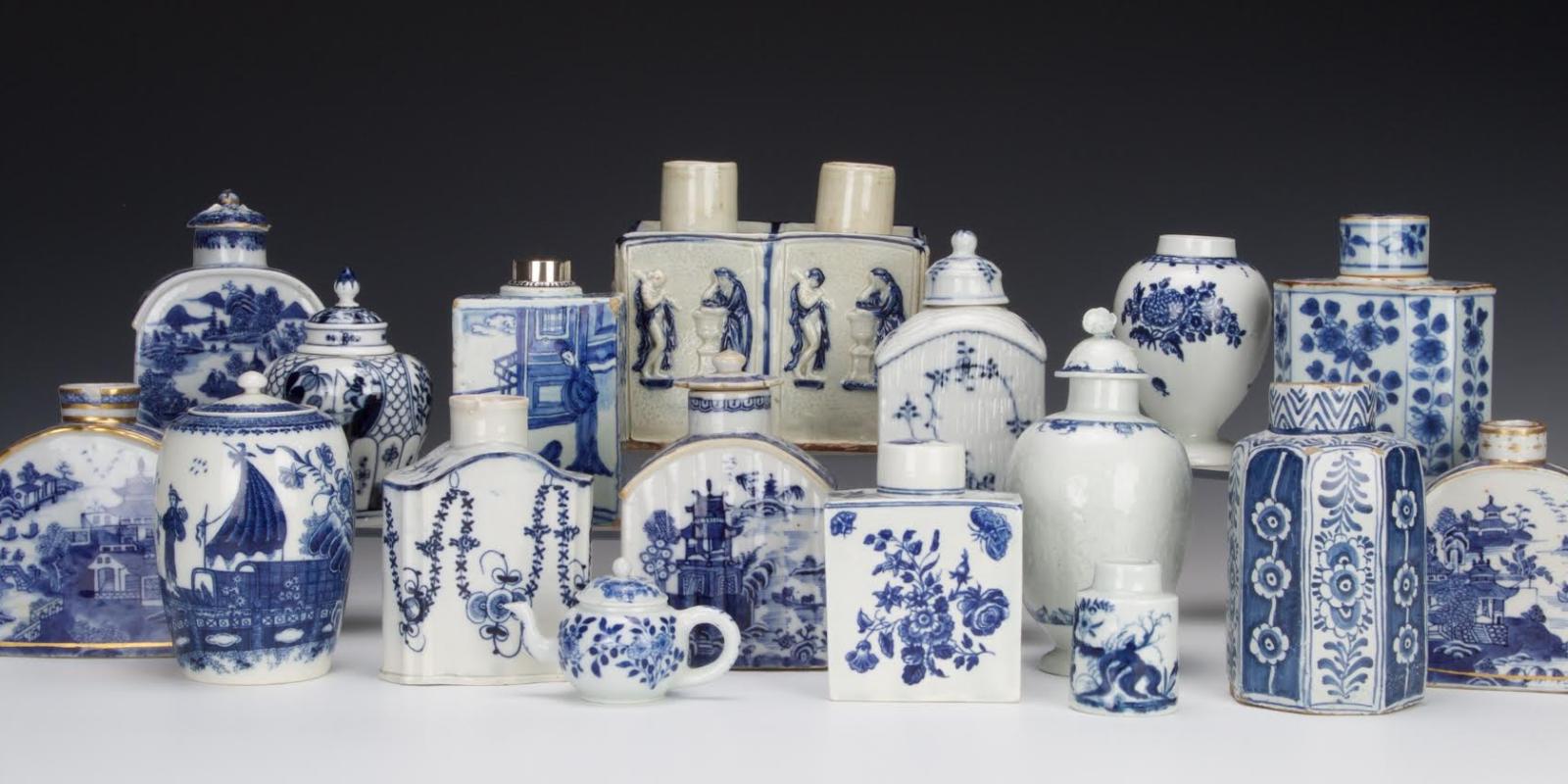As Precious as Gold: A History of Tea Caddies from the Bramble Collection
The Historic Odessa Foundation is pleased to announce As Precious as Gold: A History of Tea Caddies from The Bramble Collection, a temporary exhibition that includes 18th and 19th century tea caddies from the vast Bramble collection, opening on April 3, and continuing through August 26, 2018. The collection was built over two generations and features more than 400 examples, spanning the period from 1700 to the present.
Marnie Bramble of Chestertown, Maryland, started the collection more than half a century ago, and enjoined her youngest son Mark in her hobby. Mark Bramble is the author of many Broadway musicals including Barnum and the Tony Award Winning Best Musical 42nd Street which have been presented all over the world. Traveling with his shows provides Bramble with unique opportunities for collecting, which is the subject of his book A Tea Caddy Collection recently published by Schiffer Publishing.
The exhibition will be displayed in two of the historic houses of the Historic Odessa Foundation enclave, including the National Historic Register Wilson-Warner House (c. 1769) and the National Historic Landmark Corbit-Sharp House (c. 1774). The displays feature tea caddies arranged in fascinating groups that focus on materials and origin. The caddies and accoutrements are incorporated into these historic period rooms and will include select items from the Historic Odessa Foundation’s permanent collection.
Tea and the Forming of America
On December 25, 1773, the British tea ship Polly sailed up the Delaware River en route to Chester, Pennsylvania, carrying a cargo of 697 chests of tea consigned to the Philadelphia Quaker firm of James & Drinker. Only days earlier, on December 16th, the infamous Boston Tea Party took place, where three shiploads of tea were dumped into Boston Harbor inspiring numerous other tea party events in the mid-Atlantic region protesting the tax on tea. A mass meeting of 8,000 Philadelphians, the largest crowd assembled in America up to that time, determined that “the tea shall not be landed” and, in the Quaker belief of non-violent protest, the Polly and her tea were sent back down the Delaware River into Delaware Bay and back to England. It’s hard to imagine that nearly 250 years ago, tea was the focus of events leading directly to the Revolutionary War, and our concepts of “taxation without representation.”
Of all the different items used in the tea service, the caddy is the object upon which craftsmen and artists lavished their greatest skills and materials including silver, porcelain, pewter, creamware, pearlware, papier mâché, tortoise shell, ivory and fine woods. The superb craftsmanship and wonderful painting elevate these small containers to works of art that tell a vibrant history of a time when tea was as precious as gold.





